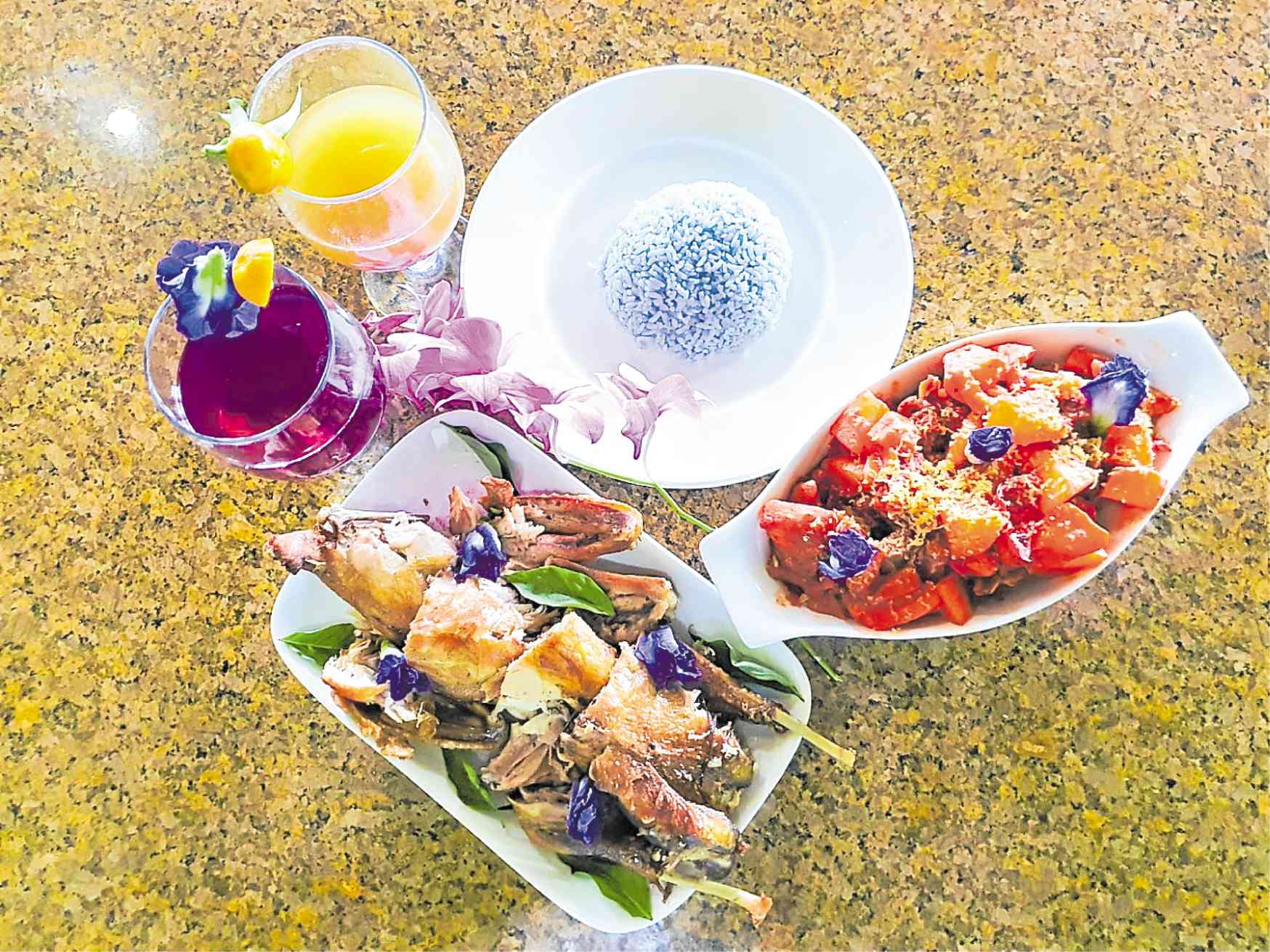
The global popularity of mass-produced, homogeneous, instant food has brought about two social movements.
Slow Food, started in Rome in 1986 to protest the building of a burger store at the Spanish Steps, is a worldwide campaign to preserve traditional cuisine. Similarly, the farm-to-table movement that sprang in the United States in response to the pervasiveness of canned food, promotes local food using fresh, locally sourced ingredients.
Both movements have caught on in the Philippines, and one of the proponents of the latter is a popular food destination in Bohol: Egay’s Farm Restaurant in Dauis, Panglao.
It is located within a farm where the owners raise livestock and grow and harvest the plants and herbs used in cooking. This ensures freshness of ingredients, says Malou Escalona, who coowns the restaurant with her husband, after whom the restaurant is named.
“We want to give our customers healthier alternatives to the usual fast-food chain offerings,” she says.
Egay’s is best known for roasted native chicken, goat caldereta, papait (bitter leaf) salad, crispy fried and duck adobo, fried pugo (quail), fried rabbit, grilled and fried turkey.
Optimum health benefits
Also popular are the fresh herbal drinks such as Blue Ternatea Juice and Insulin Juice, which uses ingredients freshly extracted from herbs grown in the farm. Diners get optimum health benefits of organic food and drinks.
The couple got into farming in 2006, carrying on Malou’s parents’ love of the land. The increasing demand for organic agricultural products inspired them to go into the farm-to-table business in 2014.
A big percentage of the demand came from restaurants, hotels and beach resorts on the island, a top tourist destination.
The Escalonas also researched on and developed a fertilizer formula made from 100-percent organic ingredients. “The mix is more effective compared to the commercial ones that use pesticides and other chemicals,” says the farmer-turned-restaurateur.
To spread the word about their businesses, the benefits of eating organic, as well as the highly specialized type of farming, Malou banks on social media. She posts pictures of the restaurant’s dishes on their Facebook page to attract tourists, health buffs, and fellow “agri-preneurs” around the country.
“I also get orders from customers online via Facebook and messaging apps. It is really an advantage when you know how to use your mobile phones and social media sites,” she told participants of a recent training of the Digital Farmers Program (DFP) held at Egay’s.
Through DFP, youth volunteers are engaged in a three-course sequence focusing on acquainting, capacitating and empowering small-holder farmers with basic digital tools and technologies, particularly social media, climate and weather monitoring applications, and e-farming, among others.
Moreover, the program intends to harness the high technology-adaptability skills of the youth in actively onboarding farmers into the digital space, and consequently, establishing a solid channel of idea-exchange from using modern agricultural technologies to discovering old-age farming traditions passed down through generations.
DFP hopes to produce various agricultural content based on the wisdom and practices of farmers, which can be uploaded and shared in various information and communications technology platforms, explained Darwin F. Flores, vice president for Community Partnerships at Smart.